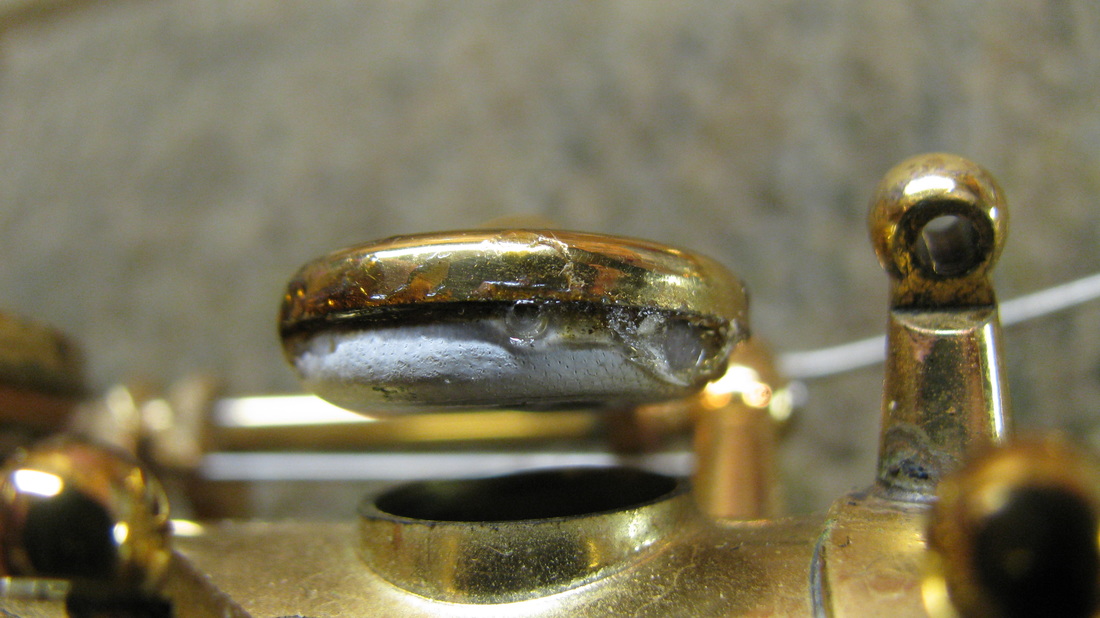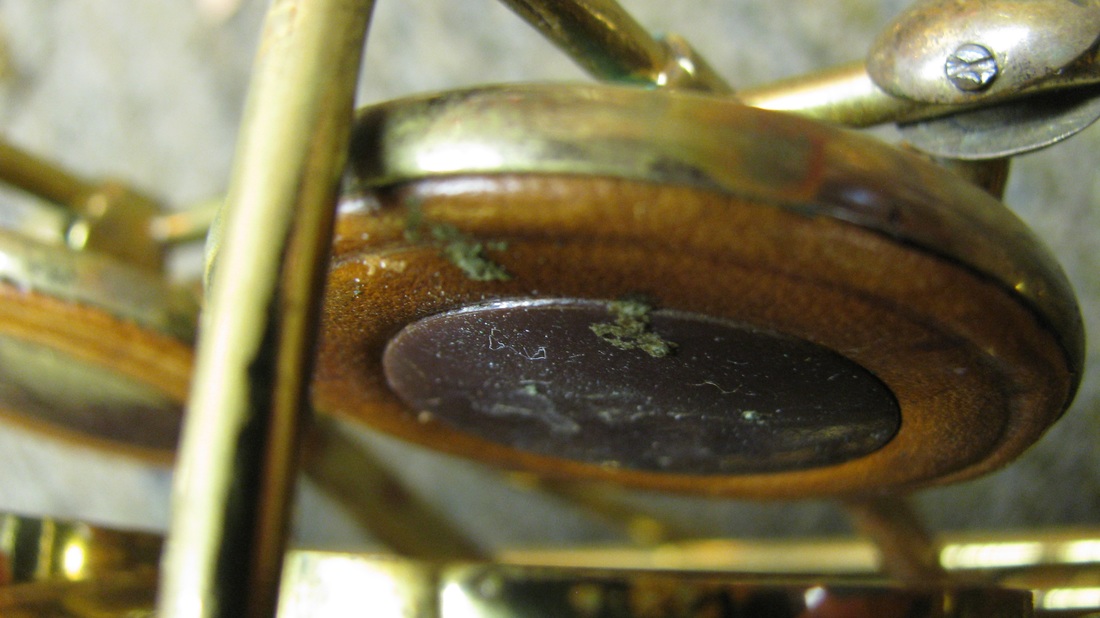"This Horn Has Just Been Serviced. In Perfect Condition. Amazing!"
You'll see these statements on just about every listing on the internet. What, you may ask, does this vague term "Serviced" mean? The answer is a long one, and it'd be impossible to get two repair techs to agree on what a properly serviced instrument is or what is done when an instrument is serviced.
The short answer throws around some more dangerously convenient terms. A "Serviced" horn is one that has been "Tuned-Up," put into "Playing Condition," has been "Cleaned, Oiled, and Adjusted," "Gone Over," "Checked Out," or "Repaired".
All of these terms are equally vague and open to wildly debated definitions. One repair tech's approach to these jobs is wholly different from another, and not every tech has the same level of scrutiny.
You'll see these statements on just about every listing on the internet. What, you may ask, does this vague term "Serviced" mean? The answer is a long one, and it'd be impossible to get two repair techs to agree on what a properly serviced instrument is or what is done when an instrument is serviced.
The short answer throws around some more dangerously convenient terms. A "Serviced" horn is one that has been "Tuned-Up," put into "Playing Condition," has been "Cleaned, Oiled, and Adjusted," "Gone Over," "Checked Out," or "Repaired".
All of these terms are equally vague and open to wildly debated definitions. One repair tech's approach to these jobs is wholly different from another, and not every tech has the same level of scrutiny.
| I have many clients in my saxophone repair shop here in Seattle with horns they have just purchased. Horns that were "Serviced." And they have: Failing adjustment materials, verdigris on the pads, rattling key work, keys with drag, action that is not balanced, necks that do not fit the receiver, neck tenons that are bleached and corroded, torn pads, incorrectly regulated octave mechanisms, keys that are not vented properly, and numerous leaks. And, they do not play. |
There are two unshakable facts here: These horns have been "Serviced." And, they are unplayable.
Someone did in fact "Go Over" these horns. But their level of scrutiny is such that the horn does not work when they are finished. Perhaps the client refused to pay for the amount of work needed to make the horn playable, which implies the tech let the horn leave their shop in the state in which I found it on my bench. Or, the horns have been deemed playable by the seller, because they sound like saxophones when they blow on them.
Someone did in fact "Go Over" these horns. But their level of scrutiny is such that the horn does not work when they are finished. Perhaps the client refused to pay for the amount of work needed to make the horn playable, which implies the tech let the horn leave their shop in the state in which I found it on my bench. Or, the horns have been deemed playable by the seller, because they sound like saxophones when they blow on them.
Either way, determining what happen is not only impossible but unimportant. We are picking up the story when the horn reaches my bench. And it is a sad, frustrating story. If I, the owner of a one man repair shop, "serviced" your horn and it had any of the above issues, how many jobs would I have to do before word got around that I did not in fact know how to do my job? Not many. I'd be without work right quick. But there is no shortage of horns being bought and sold that have been serviced incorrectly, and do not play. Why is that?
Ebay and Craigslist are real market places full of people that want to sell a horn as quickly as possible, and others that badly wish to buy a horn as inexpensively as they can. They cross their fingers and buy blindly without counsel. I hear this in my shop a lot:
Ebay and Craigslist are real market places full of people that want to sell a horn as quickly as possible, and others that badly wish to buy a horn as inexpensively as they can. They cross their fingers and buy blindly without counsel. I hear this in my shop a lot:
| "I thought it might need some work, but I was hoping it wouldn't need an overhaul." I even had a client say, "I can deal with the noisy uneven key work, it's just the leaks that are really bothering me." Well, unless you see some excellent close ups of the pad work, and reference to a website naming the tech that did the work, who will proudly stand behind their services, either don't buy it, or ignore all descriptions of the condition of the horn and assume it will need a Full Mechanical Overhaul starting at $1600. |
The picture above shows the low B pad on a horn that was listed as being in "excellent playing condition" and had been serviced by a "reputable repairman." It is a 1932 Cigar Cutter. It sold for $2,700. With this picture we can all assume that when "Servicing" an instrument it is unnecessary to remove verdigris from old bloated pads that do not seal correctly. The picture below shows the low D tone hole on the same horn. Look at the back of the tone hole. It has old, caked up debris, saliva, and grime on it. This illustrates the lack of attention to detail. It tells us that when "Servicing" a horn it is unnecessary to disassemble it to clean the bore and the tone holes of said caked up debris, saliva, and grime. We also know that it is unnecessary to change the old congealed oil in the hinge tubes - Look at the hinge tubes in the back left. See that grime? This horn was "Fully Serviced By A Reputable Repairman." And it was totally unplayable.
Unless you see some excellent close ups of the pad work, and reference to a website naming the tech that did the work who will proudly stand behind their services, either don't buy it, or ignore all descriptions of the condition of the horn and assume it will need a Full Mechanical Overhaul starting at $1600.
Here is a link to a Selmer Triple S Super I sold. It has good close ups of the pad work and when I had it listed on ebay or Facebook I included links to my website so people could see even more pictures of the horn there. Any listing should have such details as well or it is suspect.
Here is a link to a Selmer Triple S Super I sold. It has good close ups of the pad work and when I had it listed on ebay or Facebook I included links to my website so people could see even more pictures of the horn there. Any listing should have such details as well or it is suspect.



